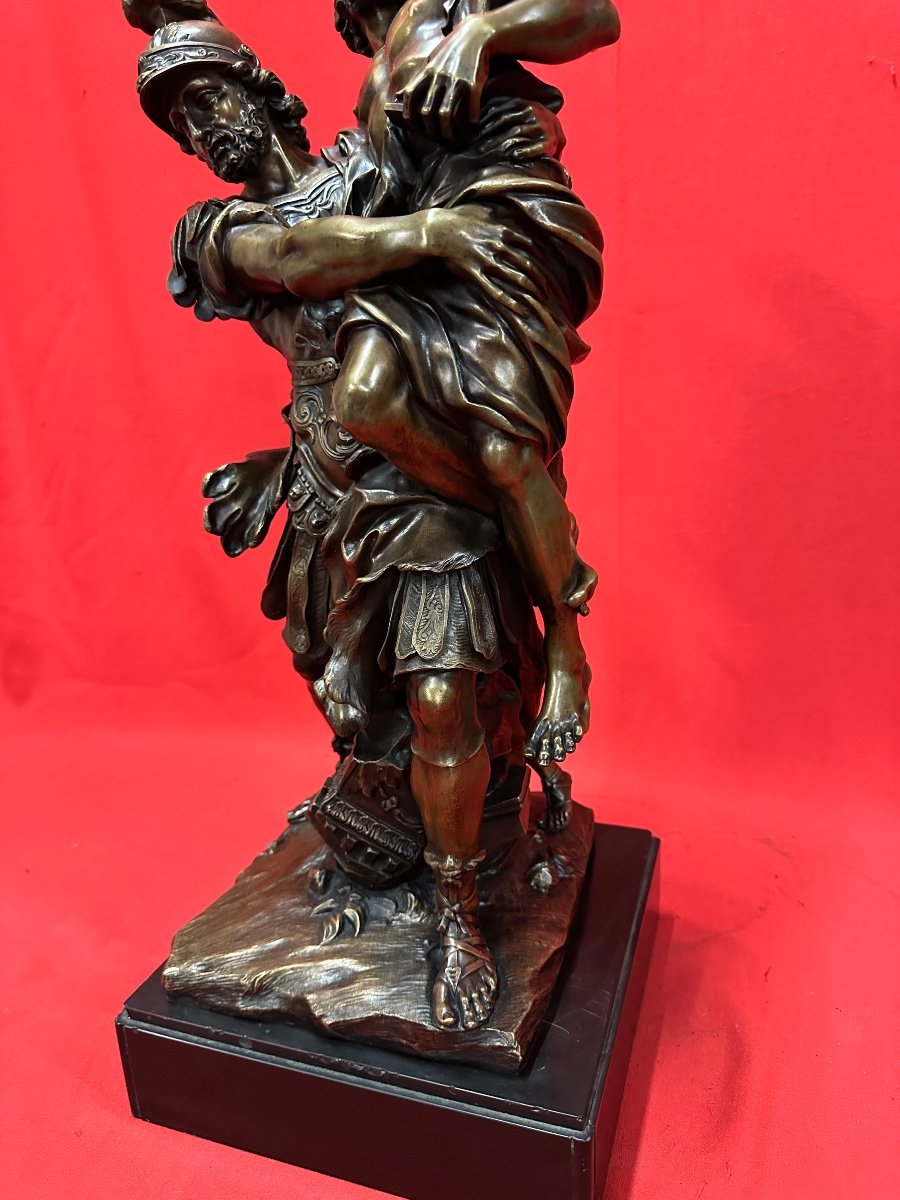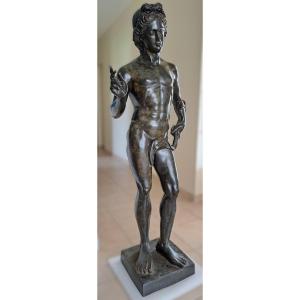The myth of Aeneas saving Anchises and Ascanius from the burning of Troy is an important moment in the Aeneid, the epic poem written by the Roman poet Virgil. This story takes place during the fall of Troy, an event that occurred after the famous Trojan War. It highlights the heroic actions of Aeneas, a Trojan prince and son of the goddess Aphrodite (Venus), who is considered one of the major figures in Roman mythology.
The Story of Aeneas
When Troy was destroyed by the Greeks, who used the famous Trojan Horse,Aeneas found himself in the thick of the fight. As the city burned, Aeneas led a group of survivors, including his father Anchises and his son Ascanius, out of the city. This moment, when Aeneas carried his father Anchises on his shoulders and took his son Ascanius with him, is often depicted as a symbolic act of heroism and duty. Aeneas was not only a respected leader, but also a devoted son and father, putting his family above all else, even in the most desperate circumstances.
The Flight from Troy
According to the myth, Aeneas was driven by the will of the gods to found a new city, which would later become Rome. But before leaving Troy, he saved his father, who was too old to escape alone, and his young son. This rescue was accomplished with the help of the gods, who gave Aeneas a divine mission to found a new civilization. This moment is of great importance in Roman mythology, as it establishes the link between the Trojan heroes and the founding of Rome (Romulus, the legendary founder of Rome, being a descendant of Aeneas), which is presented as Aeneas's destiny.
Symbolism
Aeneas' escape from the burning Troy is often interpreted as a symbolic moment of victory over adversity and passing the torch from the old civilization to the new. It highlights not only Aeneas' strength and courage, but also the deep family values he embodies. This story is fundamental to the birth of Rome, and for this reason Aeneas is often seen as an ancestor of future Roman emperors, including Augustus. The scene of Aeneas saving his father and son is frequently depicted in works of art, as it highlights both Aeneas' heroism and the mythological roots of the Roman nation. It was not only a moment of physical salvation, but also a spiritual and cultural transformation for the future of Rome.











































 Le Magazine de PROANTIC
Le Magazine de PROANTIC TRÉSORS Magazine
TRÉSORS Magazine Rivista Artiquariato
Rivista Artiquariato